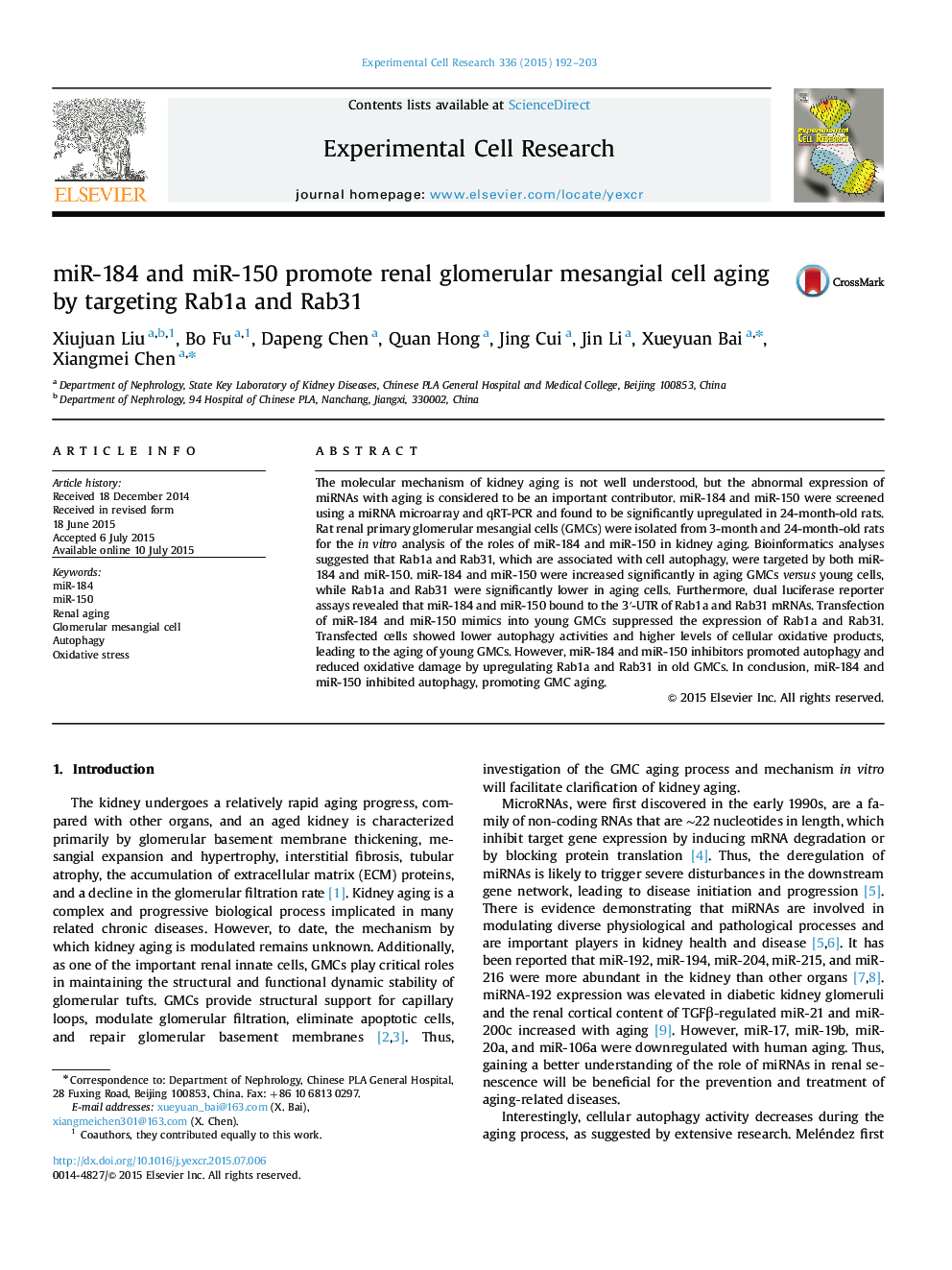| Article ID | Journal | Published Year | Pages | File Type |
|---|---|---|---|---|
| 2130165 | Experimental Cell Research | 2015 | 12 Pages |
•miR-184 and miR-150 were differentially expressed in old rat renal tissues.•miR-184 and miR-150 were increased significantly in aging glomerular mesangial cells.•miR-184 and miR-150 suppressed the expression of Rab1a and Rab31.•miR-184 and miR-150 inhibited autophagy and promoted oxidative damage.
The molecular mechanism of kidney aging is not well understood, but the abnormal expression of miRNAs with aging is considered to be an important contributor. miR-184 and miR-150 were screened using a miRNA microarray and qRT-PCR and found to be significantly upregulated in 24-month-old rats. Rat renal primary glomerular mesangial cells (GMCs) were isolated from 3-month and 24-month-old rats for the in vitro analysis of the roles of miR-184 and miR-150 in kidney aging. Bioinformatics analyses suggested that Rab1a and Rab31, which are associated with cell autophagy, were targeted by both miR-184 and miR-150. miR-184 and miR-150 were increased significantly in aging GMCs versus young cells, while Rab1a and Rab31 were significantly lower in aging cells. Furthermore, dual luciferase reporter assays revealed that miR-184 and miR-150 bound to the 3ʹ-UTR of Rab1a and Rab31 mRNAs. Transfection of miR-184 and miR-150 mimics into young GMCs suppressed the expression of Rab1a and Rab31. Transfected cells showed lower autophagy activities and higher levels of cellular oxidative products, leading to the aging of young GMCs. However, miR-184 and miR-150 inhibitors promoted autophagy and reduced oxidative damage by upregulating Rab1a and Rab31 in old GMCs. In conclusion, miR-184 and miR-150 inhibited autophagy, promoting GMC aging.
